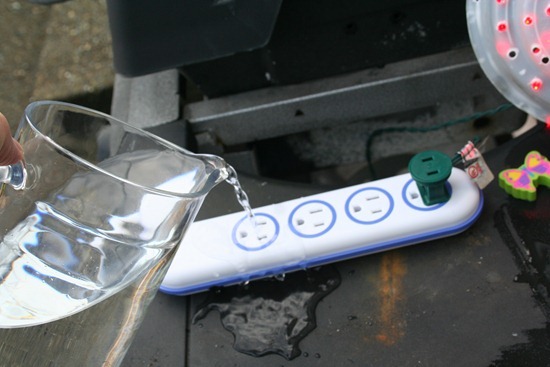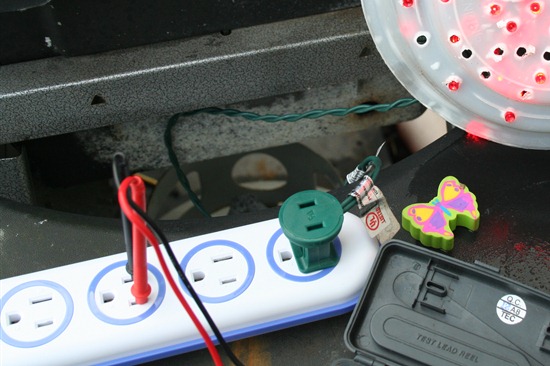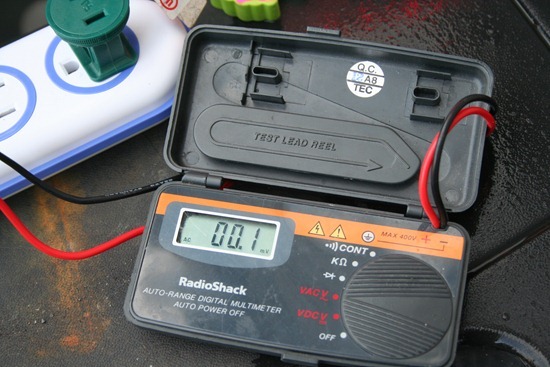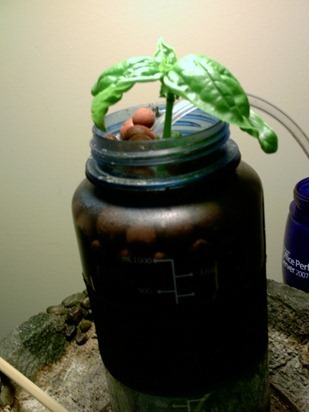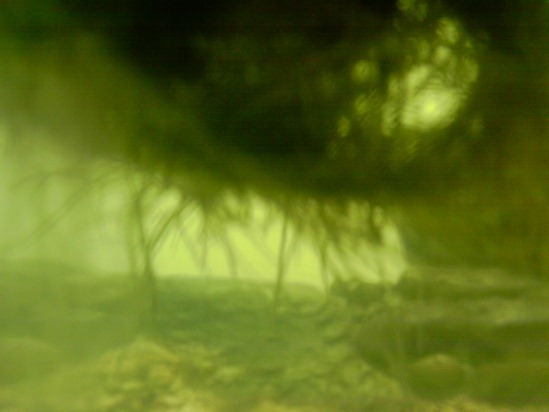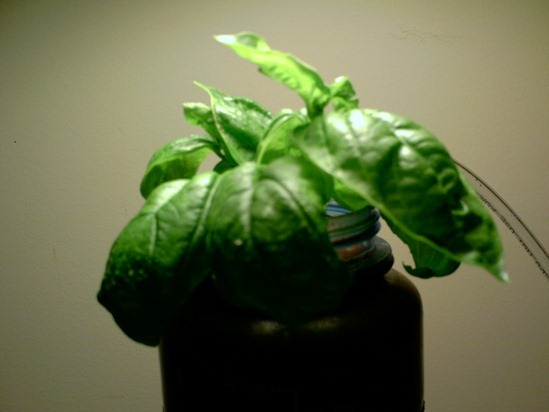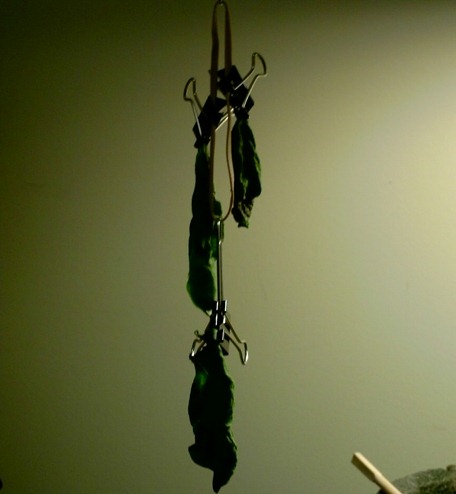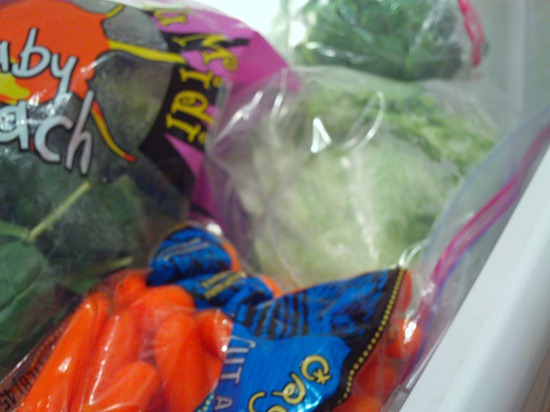Wet Circuits water resistant power strip review
13.3 years ago electronics, power strip, product review, water, waterproof, wet circuits
One problem with growing plants indoors is the requirement for indoor lighting, combined with the need to pour water on plants around such lighting causes a potential electrical disaster. When I heard about Wet Circuits water/tamper resistant power strip I simply had to try it out. Not having the $70 to buy one myself, the nice people at WetCircuits sent me a sample to try out these claims for myself.
After reviewing their very informative infomercial style demonstration (see below) I felt I would not be doing my job unless I reproduced at least some of these demonstrations for myself.
Being cautious I started with sticking in my voltmeter while having my homemade supplemental LED light plugged in.
Test #1 one passes with flying colors
Next it was time to pour water on the live outlet…now using a normal socket this would result in a nice spark if you were lucky. As you can see from the video below, this also passed without any problems.
I decided to skip the tweezers test provided that the voltmeter answered the expected result and well it is just plain scary to try even when I know it won’t shock me.
Now if you have shelves of grow lights or your own grow box for $70 this is a decent investment though it does buy you some piece of mind.
Office hydroponic setup (Growing Basil in a water bottle)
13.3 years ago basil, cheap, hydroponics, office
An unfortunate thing happened to my little office basil growing experiment, I got some fungal gnats and not wanting to be the guy known for his office infested with flies I decided to throw together a little hydroponic system primarily consisting of items I had around the office.
I started with an old reusable water bottle I had previously used to store water for my prior soil based basil plant. I filled the bottle with water, added a couple of handfuls of hydrocon clay pellets, dropped in an air stone attached to a cheap aquarium pump and I have a neat little bubbler system.
After a couple of weeks there was great root growth (water is not really green just poor camera, bad lighting and unfortunate use of blue water bottle)
After a couple more weeks, when I was away for Christmas vacation I came back to a plant though needing some water was still growing strong.
For nutrients I broke off the smallest piece of some generic brand plant spike fertilizer I can put in piece in every week or so along with a small pinch of epsom salt.
When it is time to harvest, I made good of office supplies: a couple of binder clips attached to some rubber bands provides good air circulation to dry out any extra basil I want to store for later use.
Hey it is not pretty, but it is cheap and provides me some fresh basil to add to my omelets from the cafeteria downstairs and even a little extra dry basil to use at home.
How to store your Fruits and vegetables
13.3 years ago corn, herbs, peas, peppers, spinach, storing, tomato, vegetables
Whether it is to preserve your harvest from your garden or to help extend the life of the expensive produce you purchased from your local grocery store or farmers market, a little knowledge can help keep your veggies tasty and even stretch out a couple of extra days before becoming compost.
The basic idea is pretty simple, think about where your produce is stored in the grocery store and then do the same thing at home. For example they store carrots in a refrigerated display case…so you should store yours in your refrigerator. They store their onions at room temperature so you would think it would be best to do the same…reality is they are best to be stored between 55-65 degrees. During the winter time my room temperature is probably in the top part of that range but majority time my indoor temperatures will be much higher. Depending on the age of your house, you may have a root cellar which helps to create these ideal conditions for that pesky produce that is too cold in the refrigerator but too warm in a heated house. For the rest of us find a nice cool location in your house such as garage or spot next to a window (at least during the wintertime) otherwise you may be reducing the quality and viability of your produce.
Below is a list of the recommended storing temperatures for fruits and vegetables:
